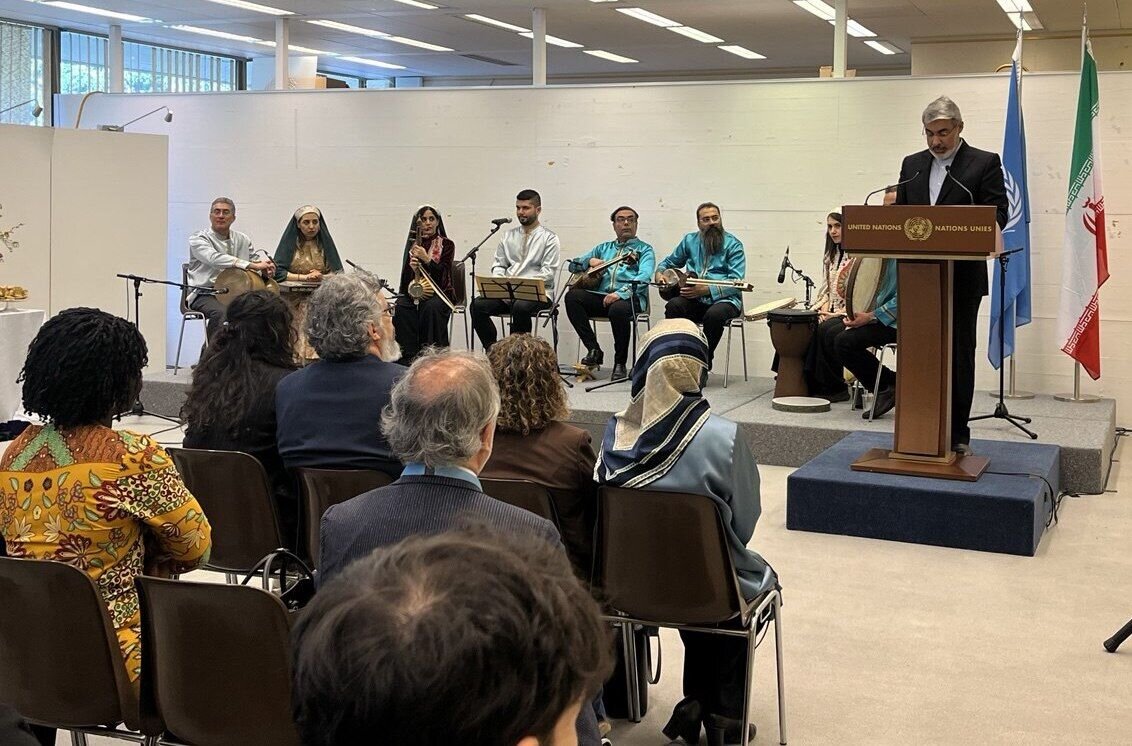UN headquarters in Geneva hosts Nowruz celebration led by Iran

TEHRAN - A special celebration marking Nowruz -- the Persian New Year -- was held at the United Nations Headquarters in Geneva on Friday, April 4.
Organized by the permanent mission of the Islamic Republic of Iran to the United Nations Office, the event brought together ambassadors and senior diplomats from various countries, representatives from international organizations and NGOs, academics, cultural figures, and members of the Iranian community residing in the famed Swiss city.
In his opening remarks, Ambassador Ali Bahreini, Iran’s permanent representative to the UN in Geneva, highlighted Nowruz as a symbol of enduring cultural solidarity among the nations of the region, IRNA reported on Saturday.
“Today, we gather to celebrate Nowruz and to share its message of peace, friendship, and unity as a reminder of the common bonds that connect nations around the world,” he said.
Ambassador Bahreini emphasized that Nowruz, now recognized globally as a shared cultural heritage [by UNESCO], is rooted in the epic histories and traditions passed down through generations by diverse communities. “It is a legacy brought from the heart of ancient civilizations to the international stage,” he added.
The event also featured a performance by Soroush-e Molana, an Iranian traditional music ensemble dispatched to Geneva by Iran’s Islamic Culture and Relations Organization. The group captivated the international audience with a selection of classical Persian compositions and regional melodies, showcasing the richness and refinement of Iranian musical heritage, the report said.
The ceremony was warmly received by attendees and served as a prime example of Iran’s cultural diplomacy efforts at the international level.
Nowruz is a historic rite observed annually on 21 March in many countries along the Silk Roads. This marks the New Year, announces spring, and the rebirth of nature. The cross-cultural celebration means No –new– and rouz –day– in Persian. Therefore, Nowruz signifies new day, and symbolizes new beginnings. People from different religious and cultural backgrounds celebrate Nowruz. The return of spring has a great spiritual significance, symbolizing the triumph of good over evil, and joy over sorrow.
Over time, Nowruz has developed and expanded, incorporating new social, religious, and cultural influences. Although the traditions and customs of Nowruz vary from country to country, there are many unifying features. In most regions, before the festival people perform ritual dances such as leaping over fire and streams. Many households also replenish their water supplies on the last Wednesday of the year.
Another common ritual and widespread tradition is the preparation of a Nowruz table. The objects on the table symbolize purity, brightness, abundance, happiness, and fertility for the New Year. On Nowruz day, people feast, visit family members and friends, and exchange gifts. These practices are a good way to socialize with loved ones and strengthen deep-rooted bonds of friendship. Nowruz is also an occasion for traditional cultural activities, combining common practices with local customs, such as poetry, music, open-air festivities or local street performances.
In recognition of the importance of this ancient rite, Nowruz was inscribed on UNESCO’s Representative List of the Intangible Cultural Heritage of Humanity in 2009. Moreover, in 2010, the United Nations General Assembly proclaimed 21 March International Nowruz Day.
AM
.
Leave a Comment